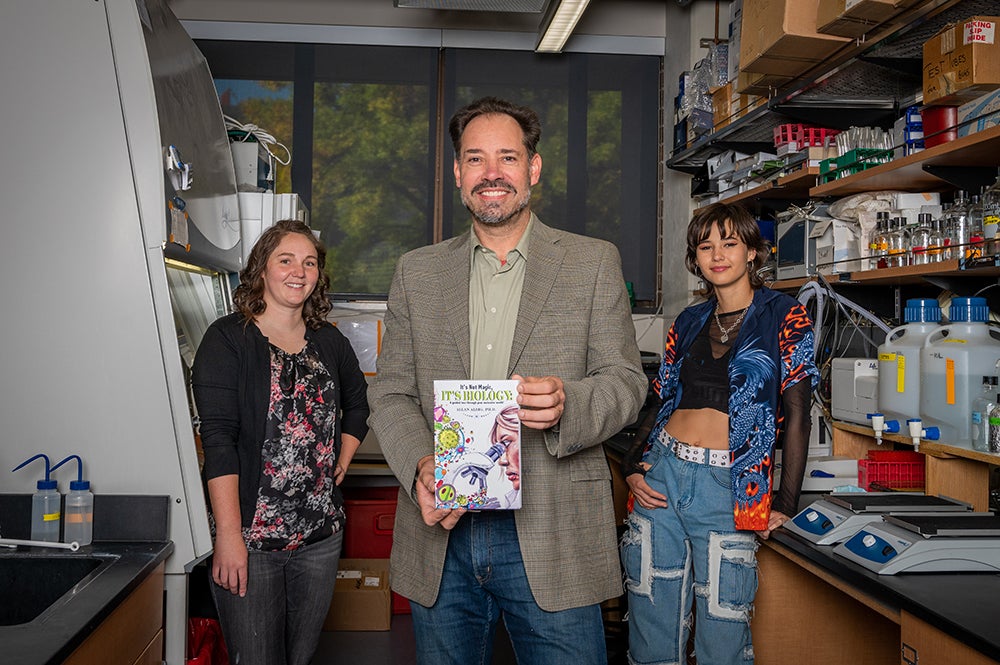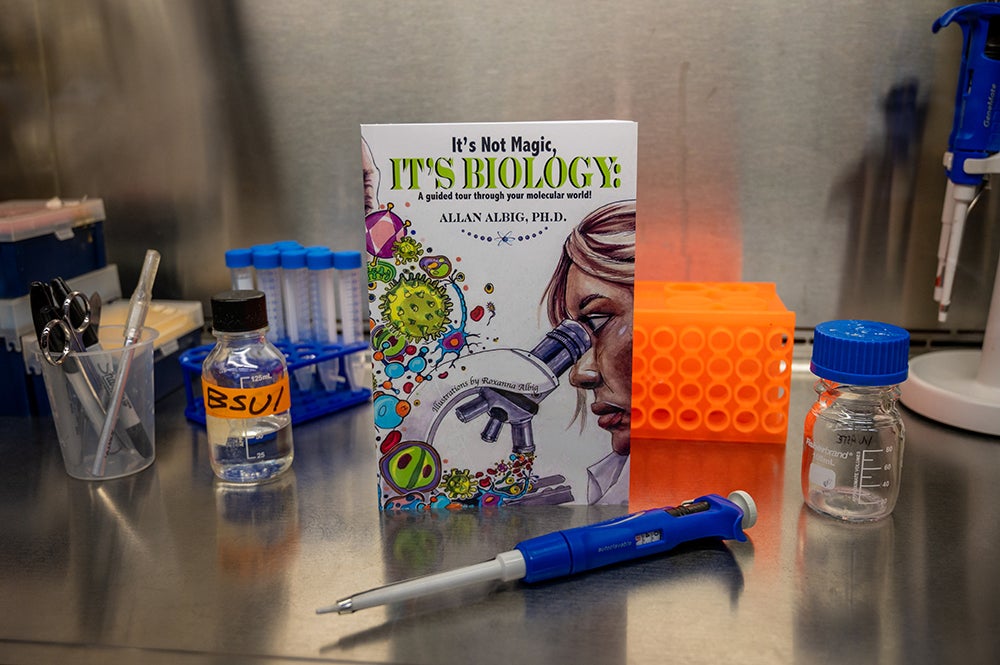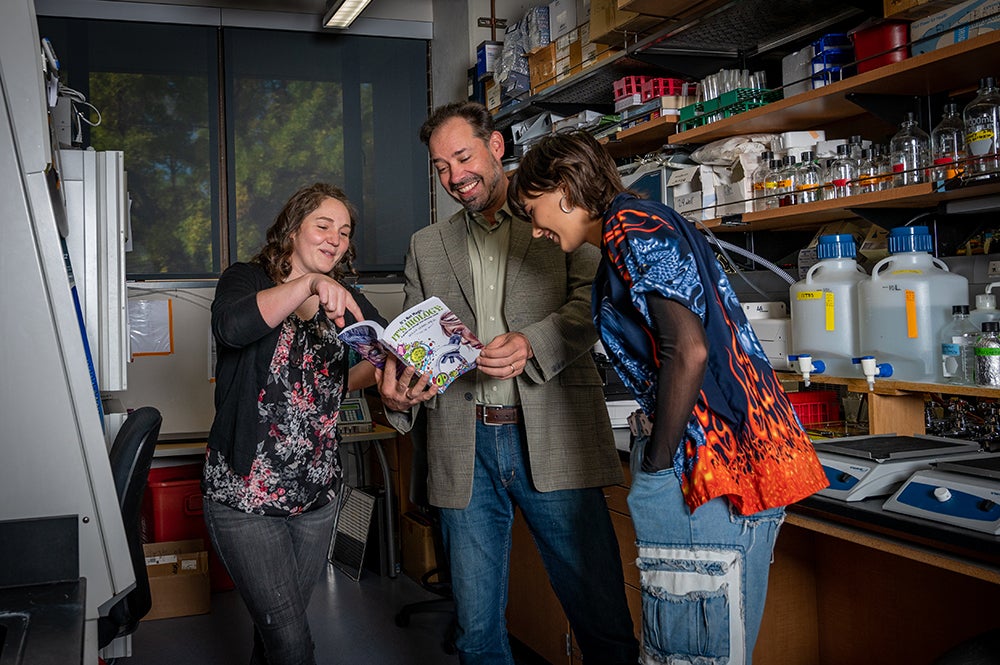
Associate professor of biology Allan Albig and his daughter Roxanna (Roxy) Albig are basically the dream-team when it comes to writing, illustrating and publishing a book on molecular biology. In fall 2021 they self-published “It’s not magic, it’s biology: a guided tour through your molecular world”, with the goal of explaining the science behind phenomenon that seem, well, magical.
For Allan Albig, the ‘light-bulb’ moment for writing the book was inspired by electric eels.
“In one of the classes I teach, I talk about how electric eels can make a shock, and I’ve always thought to myself that this is something that probably lots of people should know about how it actually works, because it seems like magic, right?” Allan Albig said. Over the next few years, professor Albig began jotting down other topics and building a list of phenomena and everyday scientific processes that he thought people would be interested in understanding.
Molecular biology is a field of science that is so broad and complex that it can be intimidating to those who have not studied it, but the processes and phenomena that it describes are intrinsic to medicine, cellular processes, and our everyday lives.

The creative team’s impetus for writing the book was to battle disinformation and public distrust of science by providing a door to accessible molecular biology for a general audience. For Albig, remedying this misconception was done through research and writing. For Boise State illustration major Roxy Albig, this was done through the creative expression of art. The book also was edited by Boise State biology doctoral student, Elise Overgaard.
“I love art because it is the single most important way we can communicate with each other,” Roxy Albig said. “Most people are visual learners. Especially when it’s a topic that is especially wordy or can put you to sleep with vocabulary. The brain can understand images much easier than text, and combined with the power of metaphor it can visualize a phenomenon much easier.”
For the father-daughter duo, collaborating not only made the book more robust, but it also taught them valuable lessons about the unique ways in which people process information differently.
For example, Allan Albig would write a chapter, and then Roxy Albig would read it, and interpret the science into art. In doing so, they both learned more about how a non-trained scientist processes technical information into accessible pieces and images, and ultimately guided the team to create a final product that will help the reader dive into the world of molecular biology with confidence. The Albigs said they hope that by understanding a little molecular biology, readers will be better able to make more informed opinions about current topics like medicines, vaccines, and questionable “internet cures.”

-By Brianne Phillips